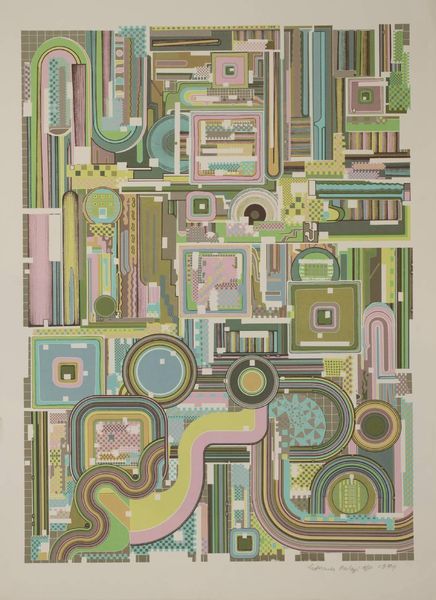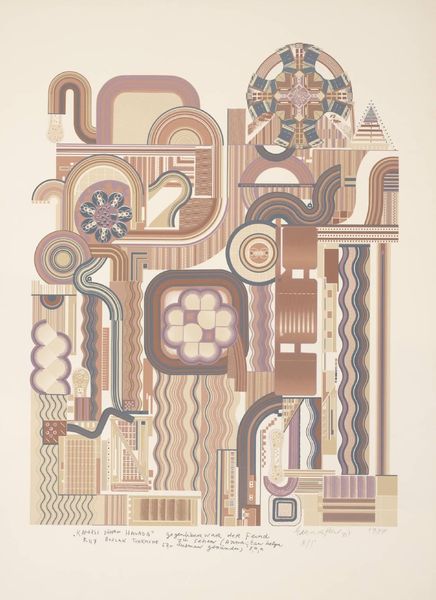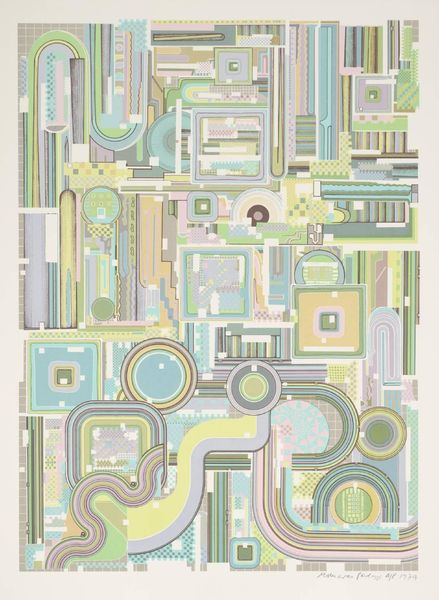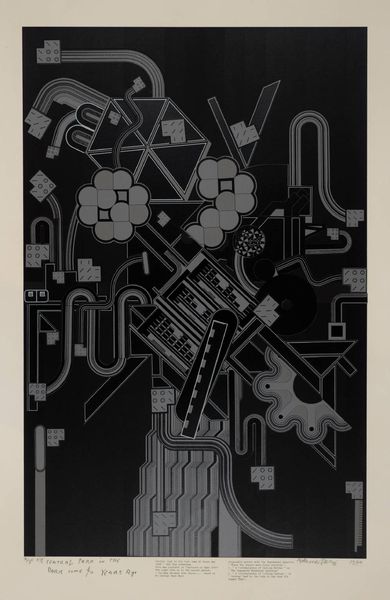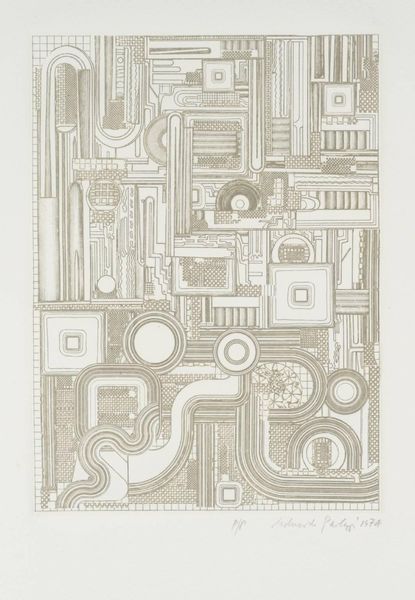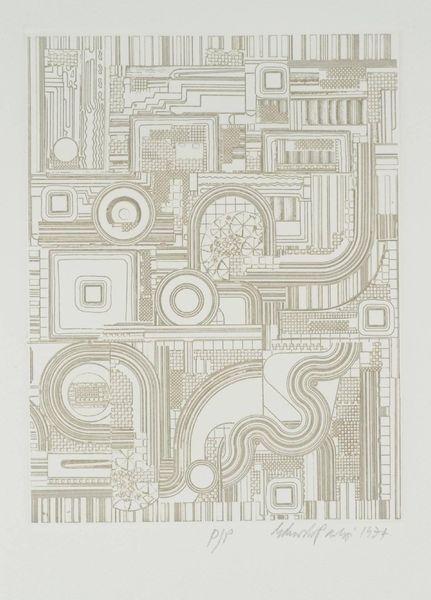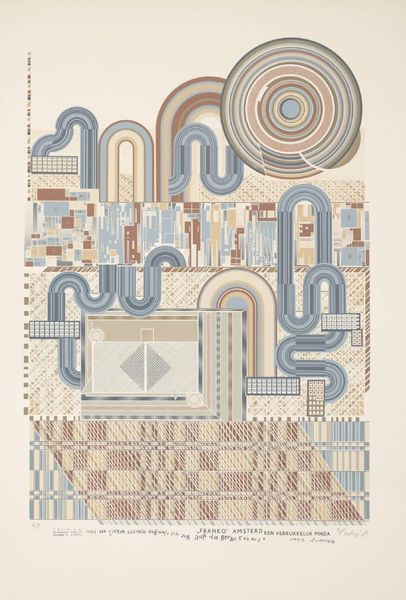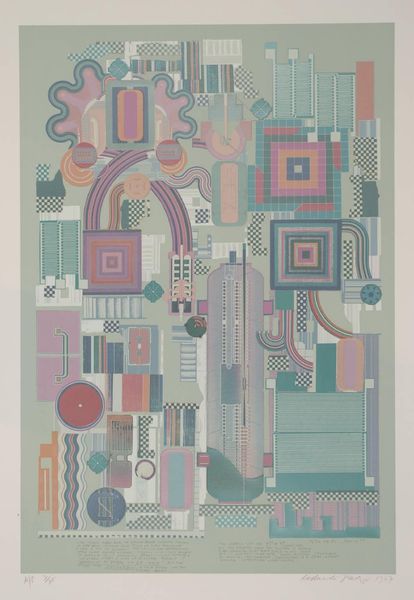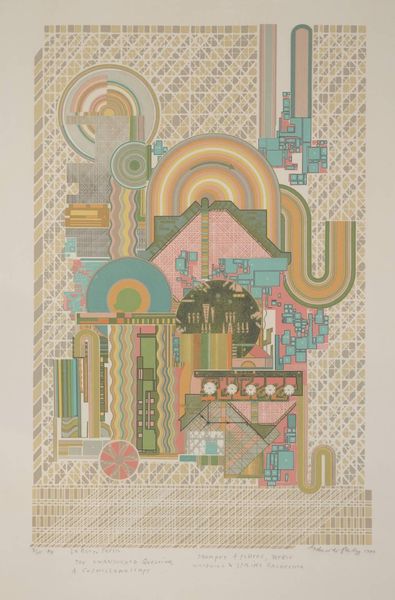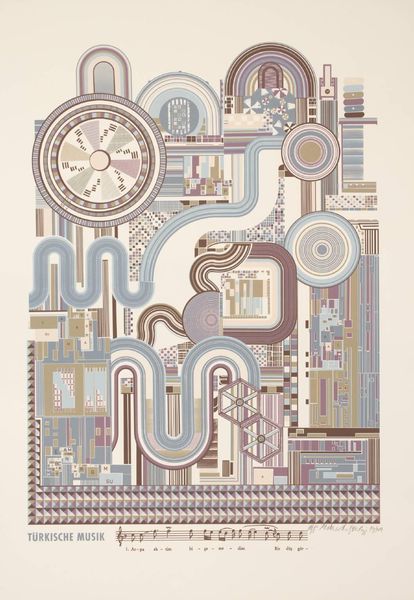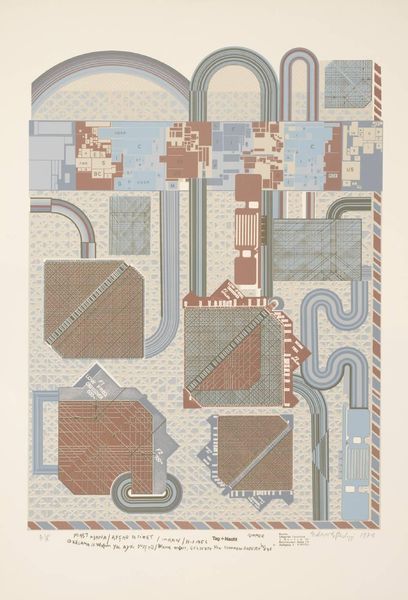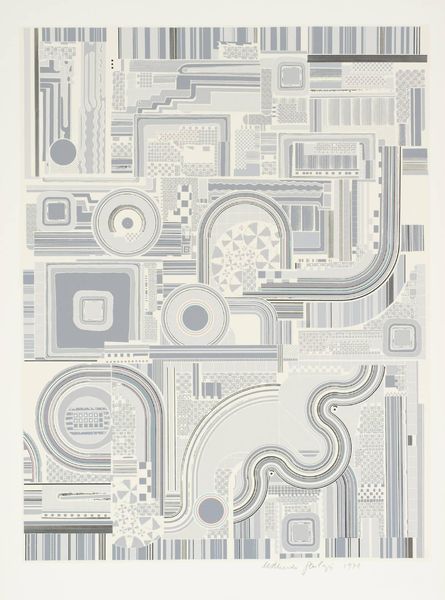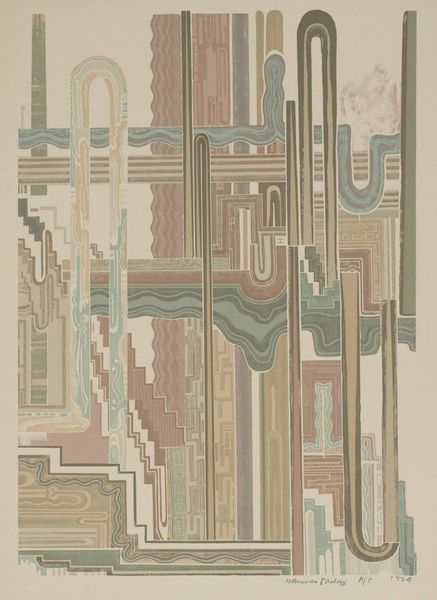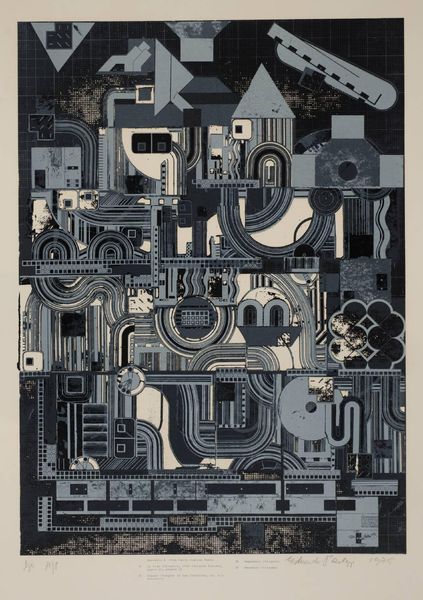
Dimensions: image: 760 x 545 mm
Copyright: © The Eduardo Paolozzi Foundation | CC-BY-NC-ND 4.0 DEED, Photo: Tate
Curator: Here we have Sir Eduardo Paolozzi’s “Aeschylus and Socrates,” part of the Tate Collections. The artist, born in 1924, passed in 2005, leaving behind such intriguing works as this. Editor: My first impression is one of complex machinery, rendered with surprisingly soft, almost pastel colors. The grid background adds to this sense of something technical, perhaps a blueprint? Curator: Precisely. The composition relies heavily on geometric forms and interconnected lines. Observe how Paolozzi juxtaposes seemingly disparate shapes to create a unified visual field. Editor: I see that, but I'm also drawn to the work's potential commentary on the intersection of classical thought and industrial progress. Aeschylus and Socrates, names synonymous with foundational philosophy, are presented as components within a larger system. Curator: A fascinating perspective. Certainly, one could argue that the work's strength lies in its ability to evoke multiple interpretations through its formal arrangements alone. Editor: And yet, I'm still left pondering the role of technology in shaping our understanding of even the most timeless ideas. It's a rather potent statement, if you ask me. Curator: Indeed, Paolozzi's work leaves us with much to consider regarding the interplay between form and meaning. Editor: A great piece for contemplating the convergence of thought and culture.
